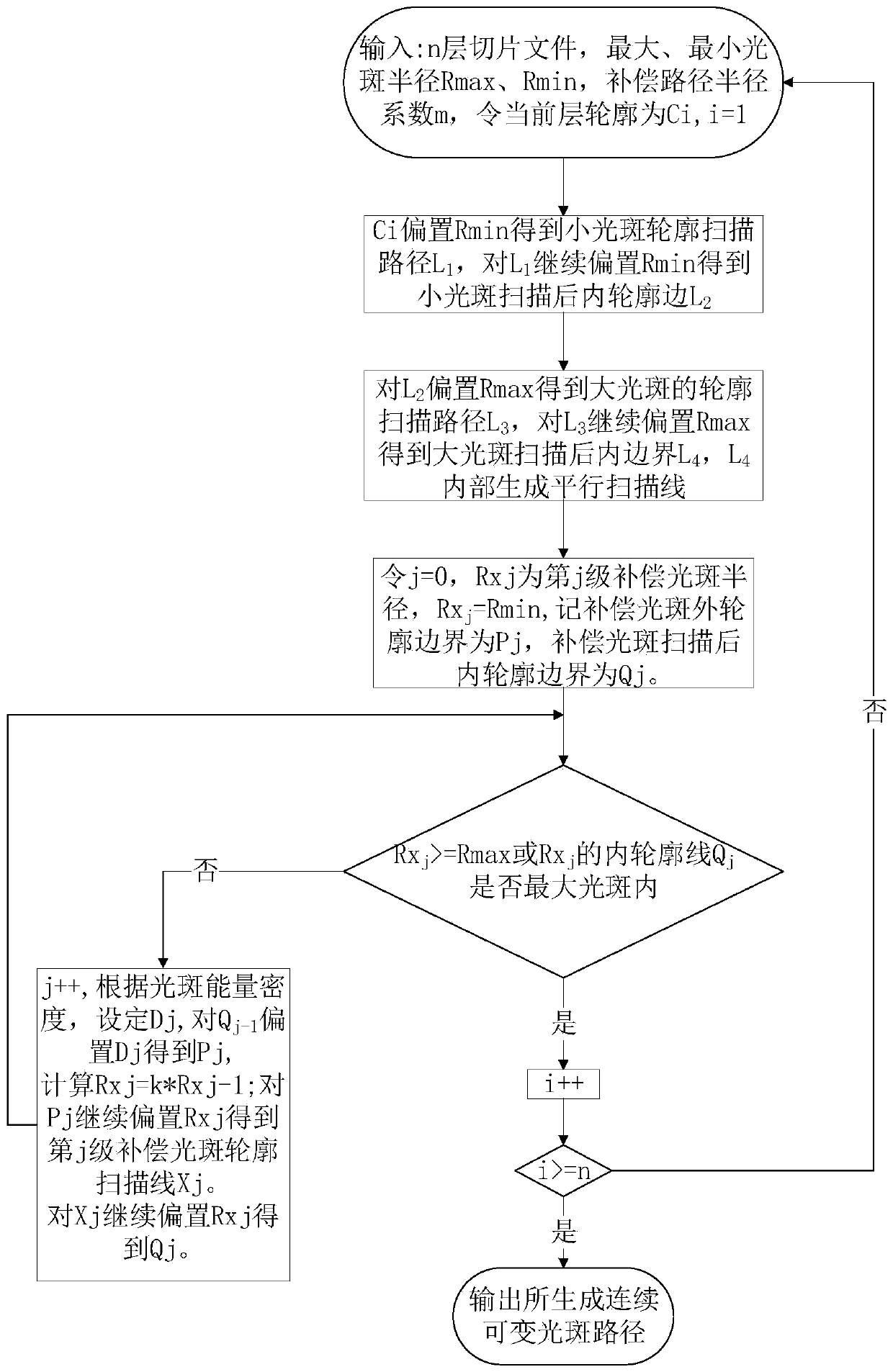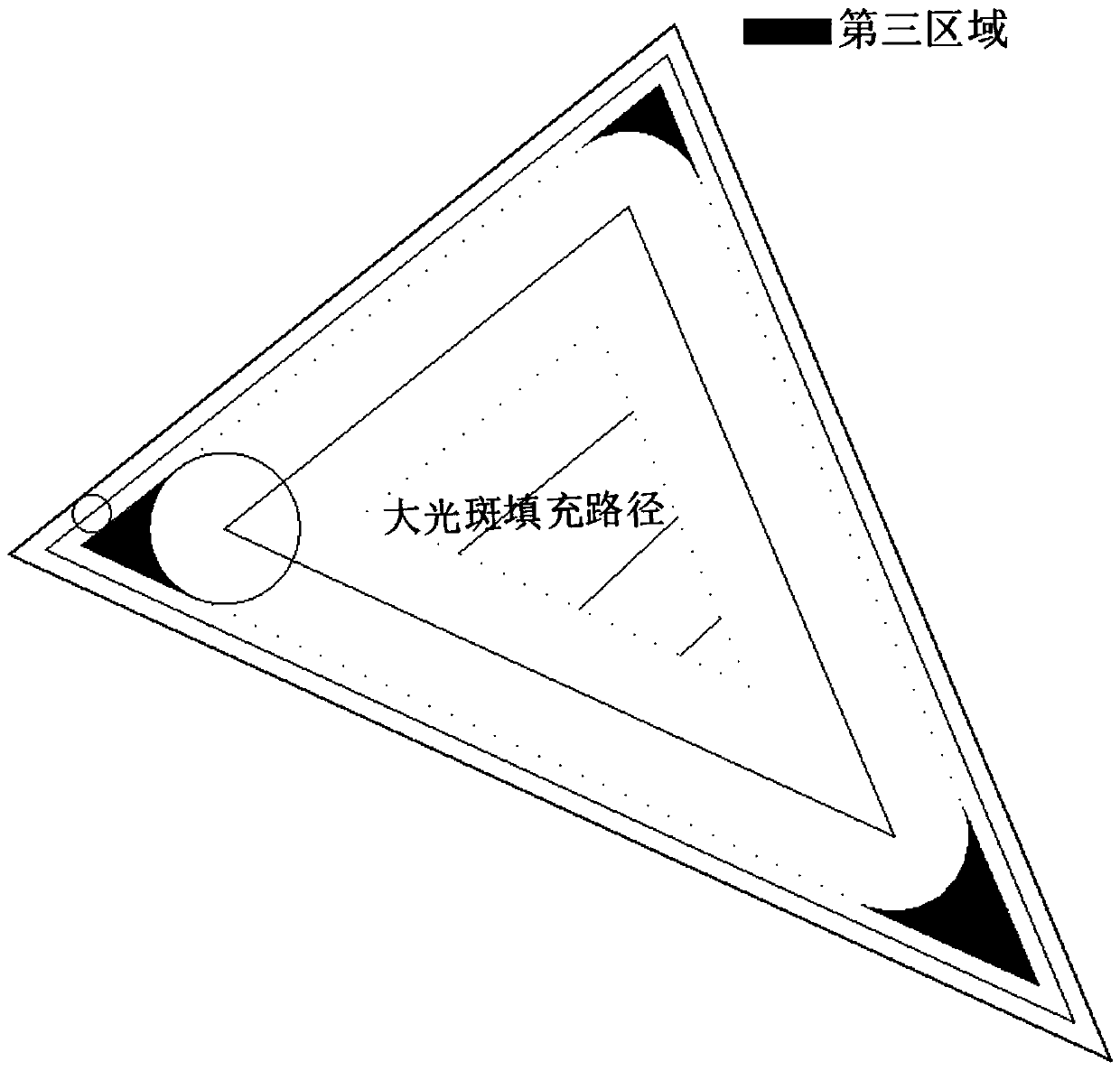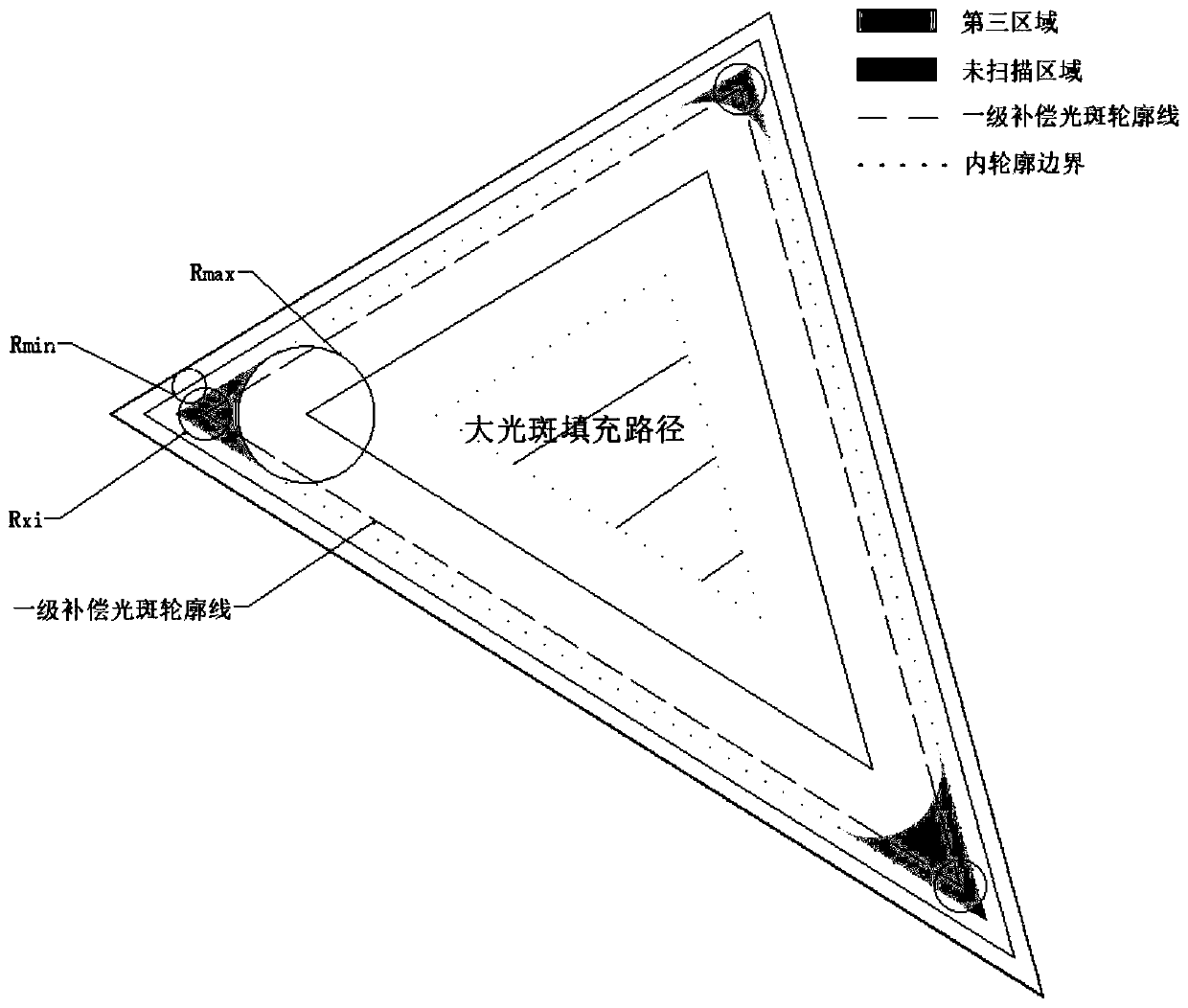Method adopting continuous variable light spots for scanning processing in 3D printing
A 3D printing and laser scanning technology, applied in the field of 3D printing, can solve problems such as over-curing, affecting product surface quality, and reducing scanning efficiency, so as to improve quality, improve molding success rate, and improve scanning efficiency.
- Summary
- Abstract
- Description
- Claims
- Application Information
AI Technical Summary
Problems solved by technology
Method used
Image
Examples
Embodiment Construction
[0029] In order to make the object, technical solution and advantages of the present invention clearer, the present invention will be further described in detail below in conjunction with the accompanying drawings and embodiments. It should be understood that the specific embodiments described here are only used to explain the present invention, not to limit the present invention. In addition, the technical features involved in the various embodiments of the present invention described below can be combined with each other as long as they do not constitute a conflict with each other.
[0030] The existing photocuring rapid prototyping method with variable spot can use a larger spot for scanning and filling in the filling area by changing the size of the spot. Compared with the traditional fixed spot rapid prototyping method, it reduces the number of scanning and filling times and improves the molding efficiency. However, When using a large spot for contour scanning, there will...
PUM
 Login to View More
Login to View More Abstract
Description
Claims
Application Information
 Login to View More
Login to View More - R&D
- Intellectual Property
- Life Sciences
- Materials
- Tech Scout
- Unparalleled Data Quality
- Higher Quality Content
- 60% Fewer Hallucinations
Browse by: Latest US Patents, China's latest patents, Technical Efficacy Thesaurus, Application Domain, Technology Topic, Popular Technical Reports.
© 2025 PatSnap. All rights reserved.Legal|Privacy policy|Modern Slavery Act Transparency Statement|Sitemap|About US| Contact US: help@patsnap.com



